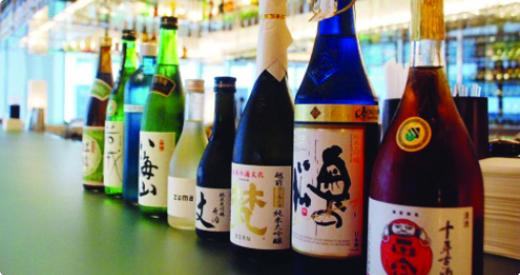
Cindy Chan from Asia Tatler Dining, the sister website of Hong Kong and Macau’s Best Restaurants Guide, of which Jeannie Cho Lee MW is wine editor, talks about pairing food with sake.
In Hong Kong, Japanese cuisine is one of the most popular foreign cuisines. From sushi and sashimi to robatayaki, tempura and kaiseki, Hong Kong people can’t seem to get enough of Japanese food and local diners are now starting to bring another side of Japanese gastronomy into light – sake.
No matter in which country or region, wine and spirits has always played a crucial role in most cultures. Sake, as known as Nihonshu (meaning “Japanese alcohol”), enhances the quality of a Japanese meal by its unique tastes and texture, highlighting a dish’s quality and also creates a enjoyable dining environment for diners. To guide our readers in the fine art of sake and food pairing, Asia Tatler Dining has invited Kelvin Ziea, the sake sommelier of the chic Japanese restaurant, Zuma, in Landmark, to tell us more about sake and gives us tips to sake-pairing.
The Basics
The three basic ingredients in creating a sake is water, rice and rice koji (a steamed rice which is required for the fermentation of the wine) and the composition of the wine creates the different categories of sake. According to Ziea, sakes are divided into two major groups; the junmai group that just uses the three ingredients and the jyozo group which adds distilled alcohol to decrease the production time and makes the sake in this group more crispy and complex in taste. Then these two groups of sake are sub-divided into three further sub-categories of sake with regards to the level of polishing of the rice used for the wine, which also results in different tastes and aromas. The categorisations are as follows:
Junmai Group (rice, water and koji)
Junmai Daiginjyo: rice are polished below 50%
Junmai Ginjo: rice are polished below 60%
Junmai Shu/ Tokubetsu Junmai: rice are polished below 70%
Jyozo Group (rice, water, koji and distilled alcohol)
Daiginjyo: rice are polished below 50%
Ginjo: rice are polished below 60%
Honjyozo/ Tokubetsu Honjyozo: rice are polished below 70%
These six different sub-categories of sake are then further divided by their different fermentation methods and post-fermentation methods (such as filtering) to create the numerous styles and kinds of sakes we see in restaurants or sake shops. Also, there are flavoured sake (e.g. plum sake) and sparkling sake which has been developed over the years.
Rules for Pairing
When it comes to pairing, Ziea gives us some basic rules of thumb. “Sake-pairing is actually very similar to Western wine-pairing. If we have something like seafood or fish, we would pair it with light-bodied sake; and for meat or grilled dishes, we pair it with more complex sake that has more body and structure”.
For example, for a waygu beef dish, Ziea would pair it up with a junmai daiginjo called Born from Fuki or Zuma’s housemade daiginjo sake. Both have a rice-polished ratio of below 50%, which gives it a fairly smooth texture and complexity, but they differ in crispiness. And for the Born from Fuki junmai daiginjo in particular, it has been aged for three years, rather than the normal five to six months for a junmai daiginjo, which gives it more complexity and complete structure with mellow tastes and smoothness to go with the beef’s richness and fattiness.
Other the other hand, the daigijo and ginjo varieties give out spectacular aromas of fruit and berries with elegant body and refined flavours. These sakes goes very well with delicate dishes such as sashimi or seafood.
Matching sake with foreign cuisines
As compared to wines, sake is a relatively light wine which can go with a wide selection of ingredients and cuisines styles. For example Mediterranean or Italian cuisine dishes which use a lot of seafood and pasta matches very well with sake.
“Once I’ve tried using Kimoto-style sake (a kind of sake which uses a very traditional fermentation method of grinding the rice to a paste for more thorough fermentation) to go with cheese and it gave out a very interesting result,” says Ziea. “The Kimoto-style sake has a yogurt and caramel aroma with milky texture that complements the softness of cheese and enhanced the flavour of both the cheese and sake”.
While matching sake, Ziea advises avoiding dishes which are very rich in flavours or hot and spicy. It is very difficult to match sake with cuisines which are spicy and uses a lot of herbs such as Sichuanese, Thai and Indian; and curry is the most difficult dish to pair well with sake. This is because sake is a light and delicate drink and the strong flavours of these dishes would usually cover the tastes of the sake, which is rather a waste of such an exquisite drink.
Perhaps next time when you are enjoying a delicate seafood dish at home, you might try a bottle of sake instead of reaching for your usual sauvignon blanc or chardonnay to explore the numerous delightful possibilities that a good food and sake pairing can bring.
Reposted with permission from Asia Tatler Dining
Image slider photo copyright © Inagiku Japanese Restaurant of Star World Macau Hotel









